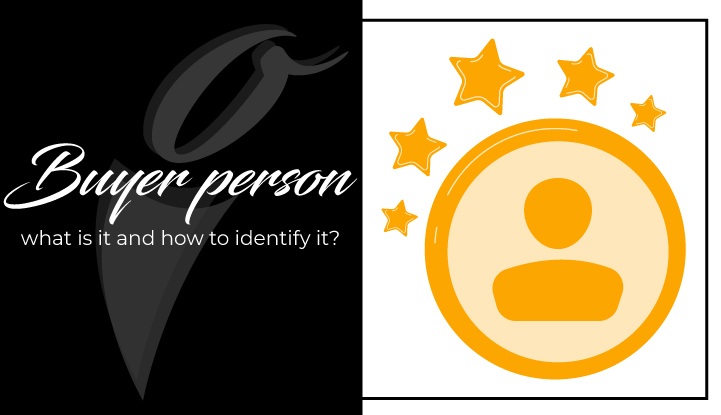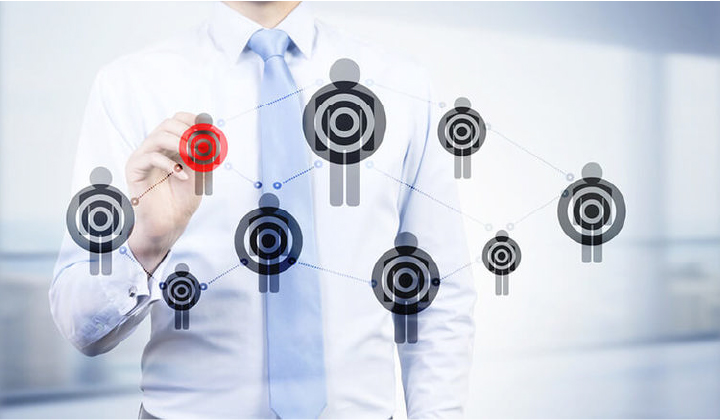Buyer Person: What is it and how to identify it?

In an ideal world, from the moment you decide to start your business or company, you should define your Buyer Person or potential customer; however, we know that sometimes when we start we have to fulfill multiple operational, administrative and commercial tasks that prevent us from focusing on strategic actions. With the passage of time this cannot become an excuse not to do it, having clear who your potential customer is will help you understand more easily the needs of your customer, where to find him and how to approach him in the right way, resulting in greater effectiveness in your strategies or actions.
So without further ado, let’s get started….
Table of Contents
¿What is Buyer Person?
It is the description of the potential customer for our product or service, there are certain companies that due to their activities not only have a buyer person, they may have 3 or more, and therefore giving them a name and even a fictitious face will help them to identify them more easily.
Unlike the target audience, which is a general description of a group of people, the construction of your buyer person is done through real and accurate data such as; age, sex, profession, position, personal habits, preferences, their motivations when selecting a product or service and the technologies or platforms they use for information and entertainment.
To make the difference clearer, we will give you an example of each one, pretending that we are a real estate agency:
Target Audience: People between 25 and 30 years old, who live in rentals and have some kind of savings with a financial institution.
Buyer Person: Lorena is 28 years old, has recently finished her professional studies, plans to get married in a few years, has been working in a formal company for more than 5 years, within the company she is a team leader, every morning at breakfast she reads the news on her cell phone through LinkedIn or Twitter and for 6 years she has had a good credit score.
With the identification of your buyer person it will be easier for you to decide on the type of content you need, in which platforms you are going to advertise and in what tone you are going to talk to your customer, no doubt your Lorenas will feel more identified with your company and you will have more chances to close a sale.

Now that you know what it is and the benefits it will bring you, let’s go to the next step;
¿How to identify your buyer person?
The process to identify your buyer person can be a simple and even interesting exercise, if you ask yourself the right questions. To do so, we will focus on the 3 stages of purchase:}
1. Awareness, this is the stage in which the customer identifies that they have a problem, need or objective, and evaluates whether to solve it they need to make a purchase or acquire a service.
If your company is b2b you will ask yourself:
- ¿What type of company is it?
- ¿What sector is it in?
- Country or city.
- ¿Which of the services or products I have can provide a solution?
- Whose position would you identify the problem.
If your company is b2c you are going to ask yourself:
- ¿Why does it need your products or services?
- Country or city.
- Age.
- Gender (if applicable).
- Job profile.
- Schooling level.
- Marital status.
2. Consideration, at this stage the client initiates the research process to solve their need or achieve their objective.
If your company is a b2b company, the following questions will focus on the person within the company who identified the need:
- Responsibility of their position.
- ¿Does he know your services or products?
- ¿How much time elapses from the moment they identify the need to the moment of acquisition (company’s purchasing process)?
If your company is b2c:
- ¿What are their main objectives?
- ¿What are their interests or hobbies?
- ¿What activities do they do outside of work or study?
And for both models the following questions apply:
- ¿What channels or sources of information does he/she use?
- ¿Who do you trust?
- ¿What social networks do you use?
- ¿What type of content do you prefer (videos, blog, podcast, webinars, etc.)?
3. Decision, after the research the customer is ready to evaluate the different options and select one.
If your company is b2b, remember to focus the questions on the person who identifies the need:
- ¿Does he report to someone or are they reporting to him/her?
- ¿Does he have the freedom to make decisions?
The following questions apply to b2b and b2c:
- ¿What would he/she expect when contracting your services or purchasing your products?
- ¿What would you value most about your product or service?
- ¿What is your added value or differential compared to the competition?
- ¿Why wouldn’t they choose you?
This is a general guide that will help you find your buyer person, but it is possible that during the exercise you will find specific questions that are useful for your company, include them without fear, the more concise the information is, the better you will be able to define your strategies.